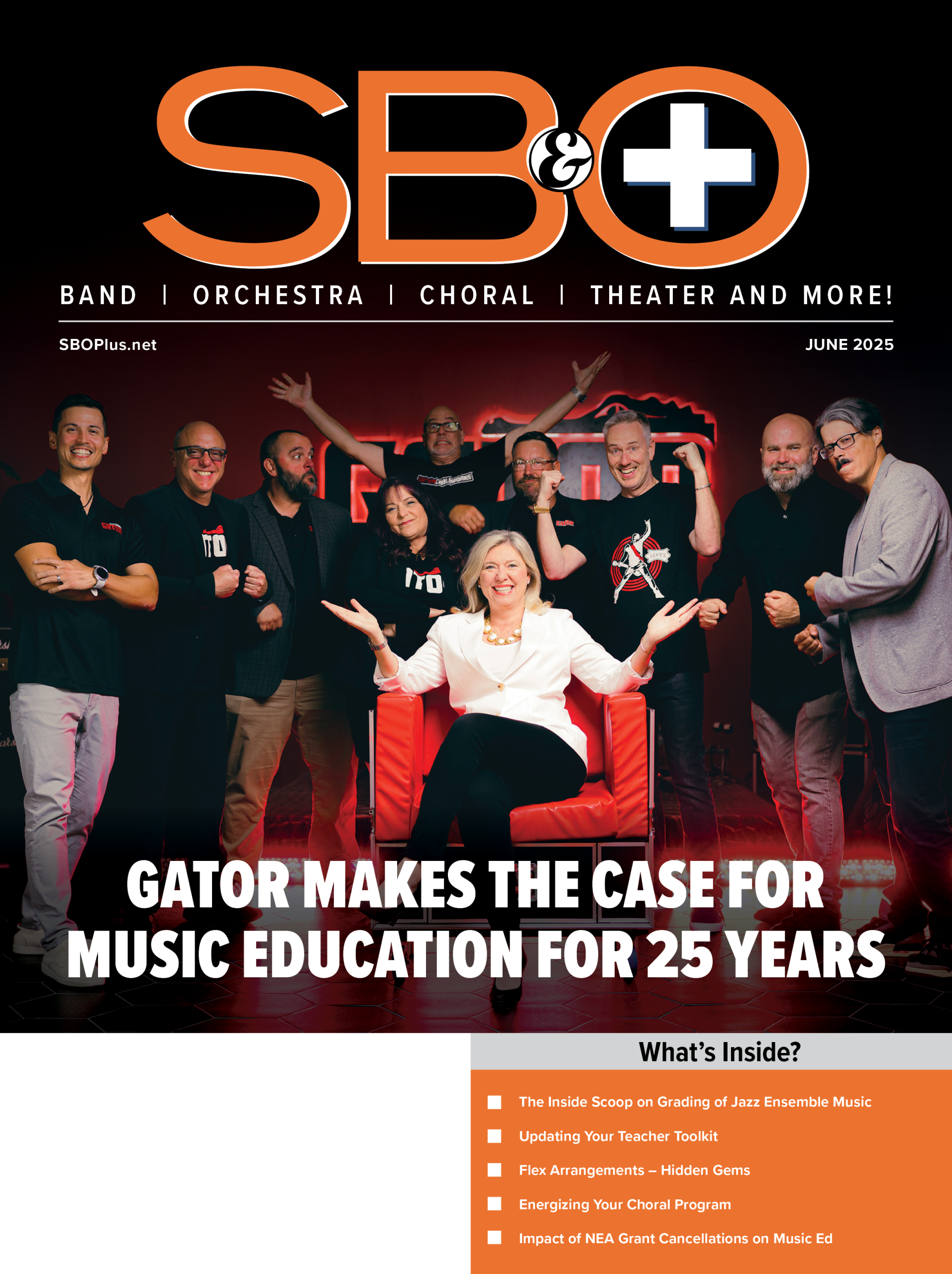 Over the past 10 or 15 years, there has been an increasingly strong movement toward accountability for student learning through remediation, enrichment, testing, and the collection of alternative forms of data. Although the push to raise student achievement has been primarily in the areas of math, science, reading comprehension, and writing, progress has been made toward the inclusion of the arts as an integral part of an academic curriculum.
Over the past 10 or 15 years, there has been an increasingly strong movement toward accountability for student learning through remediation, enrichment, testing, and the collection of alternative forms of data. Although the push to raise student achievement has been primarily in the areas of math, science, reading comprehension, and writing, progress has been made toward the inclusion of the arts as an integral part of an academic curriculum.
Most administrators believe that arts education is good for students. So why is it that when school districts face financial constraints, funding for the arts curriculum is reduced or eliminated? Many educational leaders see the arts as little more than a pleasurable activity serving as the “icing”; on the education cake it’s nice to have but unnecessary. While administrators have the difficult job of balancing the curriculum for an entire school district or building, it is the music educator’s responsibility to advocate for the role music should play in the education of the middle school student.
Within the context of choral music, some music educators have not changed much or adapted to educational trends and patterns. We teach functional reading skills, we hand out music, we teach the notes, we add expression, and then we make sure it all comes together for an effective performance. While this is a very simple description of the rehearsal process, it generally sums up the procedures many educators use to plan their rehearsals. Although this basic process can lead to very effective and enjoyable performances, it does not necessarily provide for higher-level musical knowledge or more than a mechanical understanding of notes and expressive markings and their applications. It is important for music educators to expand on student learning in ways not possible through the implementation of normal rehearsal processes.
During my 20 years of teaching in Ohio public schools, I have searched for ways to present choral music in a context that would enrich the education of my students, promote higher-level understanding, and at the same time, demonstrate its importance as a valid educational experience equal to all other subjects within the school curriculum. Early on, this seemed a daunting task, but as I continued to provide enrichment opportunities for my students, I realized that the successful experiences were based on my attention to two curricular factors: depth and breadth.
As a younger teacher, I became aware that my students did not truly understand the music in front of them. Comments about how high parts were, how difficult chords were to tune, and how much they disliked the “softer”; music, encouraged me to explore possibilities for providing a more comprehensive education for my students.
Past Commissions
The most successful enrichment opportunity I have presented my students was developed around the commissioning of an original choral composition by a well-known composer. This unit presented not only the opportunity to broaden student understanding of musical elements, but allowed for the inclusion of learning objectives from other curricular areas. Not only did my choir learn and premiere original compositions, the pieces were based on student-composed texts. While I have twice taken on this project, I am now in the process of planning and improving this experience for the 2008-2009 school year.
Past commissions resulted in two pieces that have been published by Heritage Music Press, a division of The Lorenz Corporation. The first piece, “The Wind,”; Cynthia Gray (15/1680H 3pt. Mixed), was based on a text written by an individual student. The second, “The Sky Is Crying On the Sea,”; Ruth Elaine Schram (15/2103H SATB; 15/2104H SSA), was based on several student texts “woven”; together to create an open-ended tone poem. Both projects, commissioned by the Learwood Middle School 8th-Grade Choir in Avon Lake, Ohio, included a visitation by the composer who spent a day discussing compositional technique with the students, then directing the premiere performance of the commissioned piece at the 8th-grade Spring Choral Concert that same evening. While these experiences were very successful the performance was well-received by the audience and the students genuinely valued working with a composer I have come to realize that the level of success is directly correlated to planning and activities which happen long before the final concert experience.
Planning the Commission Project
A large-scale educational project requires detailed logistical and curricular planning. Such a comprehensive plan involves dialogue with others who will make an investment in the success of the project; frequent communication will facilitate a process which is efficient and effective. A sequential approach to planning will ensure that every aspect of the educational experience is worthwhile. I have found it useful to start with a checklist of general tasks (figure 1) as I plan my commission projects.
Why is it that you would like to commission a new piece of music? My past commissions have been for the purpose of introducing elements of compositional technique to my students. Another director might choose to commission a new piece for a special occasion the anniversary of an important date, a retirement, or a community celebration. Regardless of the reason, it is important to define what the central goal of the project is and determine the procedures necessary to reach that goal.
Determine Project Goals and Processes
Planning any lesson or unit should start with goals central to the music curriculum. What should your students know and be able to do at the completion of the enrichment project? What is acceptable evidence that learning has taken place? What assessment techniques will be used to measure understanding? These are questions that guide teachers in all academic areas.
Curricular Goals
The main curricular goal is that my students will understand compositional techniques used by choral composers when setting text to music. Understanding how melody, harmony, texture, and other technical elements bring a text to life is the desired end result. I want my students to pick up a new piece of music and have the ability to make educated decisions regarding technique, interpretation, and performance practice while using more objective reasoning to determine the aesthetic value of a composition. The ability to act autonomously is a true measure that actual learning has taken place.
Co-curricular Goals
One way to insure the success of commission project is to allow for the involvement of others educators. Since we would be dealing with text, I sought input regarding the inclusion of language arts goals and how the students could raise achievement in that academic area. I wanted the students to play an active role in the commission process and felt that having them provide the text for our composition would allow them part ownership in the project.
During both of the commissions, language arts teachers asked all 8th-grade students to compose poems. I read through the poems with one of the teachers and sent what we considered to be the best 25 or so to the composer who then selected one or more as the text for the composition. This process did not represent true integration as no actual instruction occurred in the language arts classroom, and many students uncomfortable with writing poetry submitted less than acceptable poems. With the next commission, I plan to work much more closely with the language arts teachers to improve integration and facilitate effective co-curricular planning between the choral music and language arts departments.
Selecting a Composer
Of all decisions to be made regarding your commission, the selection of a composer is the most important. The person you select will provide the primary resource in your quest to enrich the education of your students. That person should be familiar with the requirements of composing for the middle school ensemble.
The best place to start is with a review of past concert programs. Is there a piece of music that seemed to work exceptionally well? Which pieces were well received by the students? We all know that some pieces, regardless of difficulty level, seem to almost sing themselves and are perpetually accepted by students as their favorites. A good place to start might be identifying one or more composers responsible for past successes.
Before contacting a composer, determine vocal and technical parameters for the composition based on size, gender make-up, and technical ability level of the choir. If you fail to effectively communicate these requirements and parameters, you risk the chance of ending up with a composition that is too difficult or one that is too easy. In both cases, the chance of engaging students throughout the rehearsal process is unlikely.
Be ready to provide detailed information regarding voicing, size of the choir, vocal ranges/tessitura, technical level of each section, and information regarding accompaniment and possible inclusion of solo or auxiliary instrumentation. Is your group single-gender or mixed? If all girls, can they perform SSAA, SSA, 2-part with occasional divisi, or should the piece be limited to two parts? If divisi is appropriate, which section(s) could handle it? How low can the basses sing? Are your tenors true tenors or boy altos in the process of mutation? Is one section stronger than the others? Is it appropriate to include a solo within the piece and for which voice? How well does your accompanist play? Is there an exceptional instrumentalist who could play an obbligato part?
What works for one group won’t necessarily work for another. At Learwood Middle School, the 8th-Grade Choir averages 190 students and the balance of boys to girls is even. Because of the large size and gender balance, the choir is able to perform SATB music with little difficulty. Performing a detailed analysis of your choir will limit the chances that you receive a composition that is inappropriate for your group.
To Be Continued …
Throughout this upcoming academic year, I intend to document every detail of planning and organization as I work through this next commission. Keep an eye out for updates on our progress in future issues of Choral Director!
 Michael K. Lisi has over 20 years of teaching experience in the Ohio Public Schools. He currently serves as the Vocal Music Director at Learwood Middle School (Avon Lake, Ohio), where over 75 percent of the students participate in choir. Michael can be reached at michael.lisi@avonlakecityschools.org.
Michael K. Lisi has over 20 years of teaching experience in the Ohio Public Schools. He currently serves as the Vocal Music Director at Learwood Middle School (Avon Lake, Ohio), where over 75 percent of the students participate in choir. Michael can be reached at michael.lisi@avonlakecityschools.org.



























